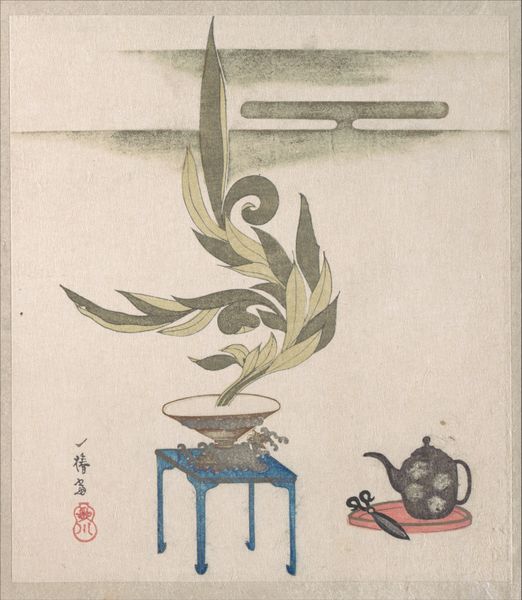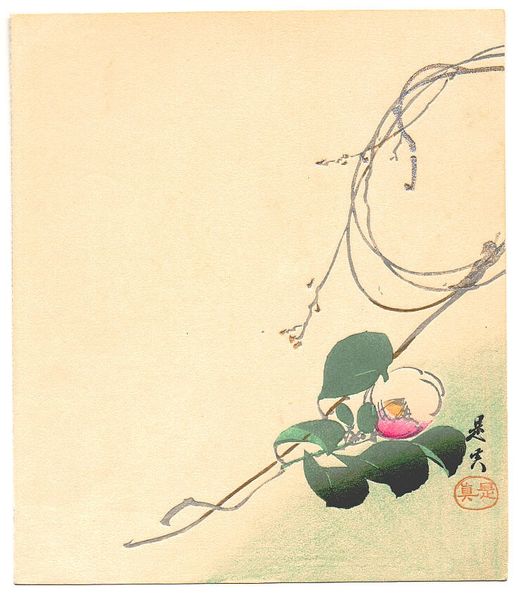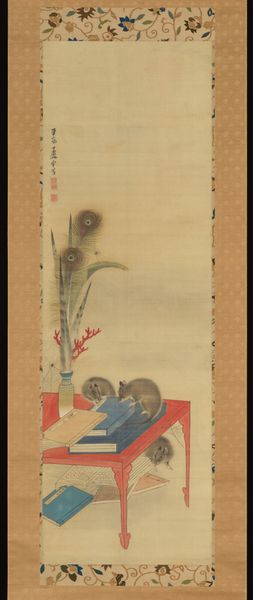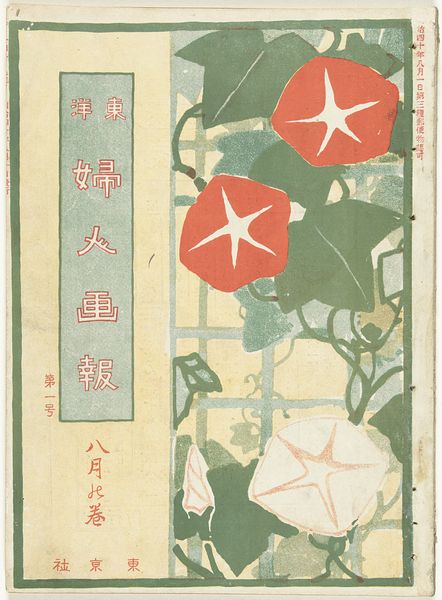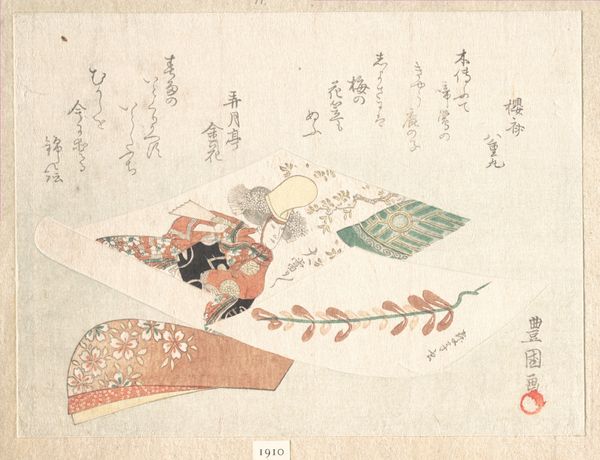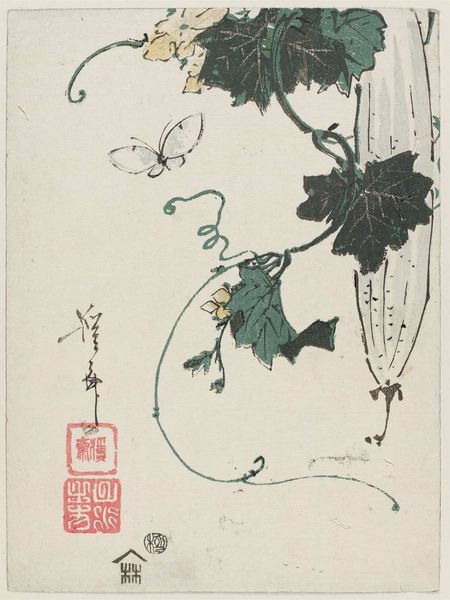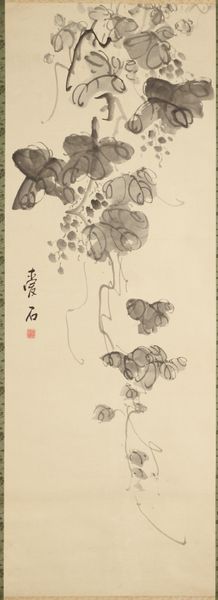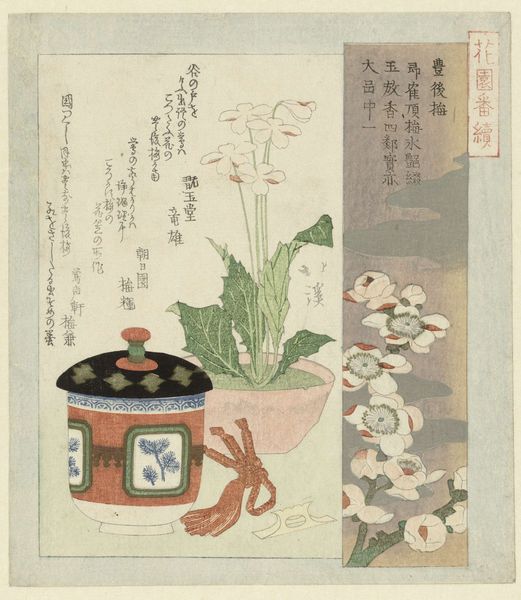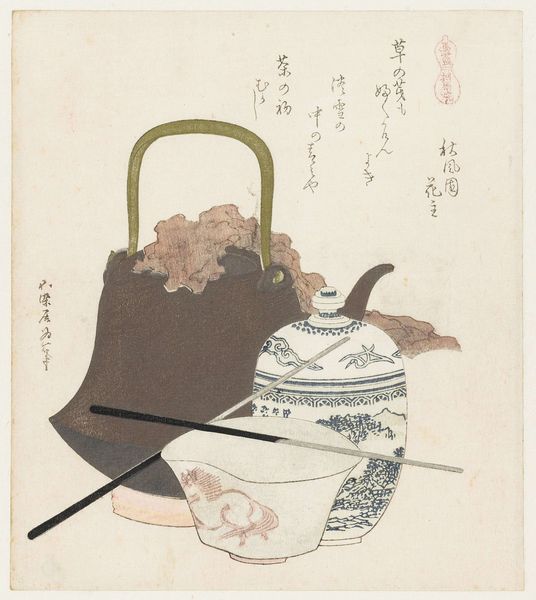
drawing, paper, watercolor, ink
#
drawing
#
water colours
#
asian-art
#
ukiyo-e
#
paper
#
watercolor
#
ink
#
geometric
#
orientalism
#
decorative-art
Dimensions: 13/16 x 9 3/4 x 12 5/8 in. (2 x 24.8 x 32 cm)
Copyright: No Copyright - United States
Curator: Welcome. Here we have Ayaoka Yūshin’s “Scenes of the Twelve Months,” created around the late 19th century using ink, watercolor, and drawing on paper. The image feels very balanced. The bright red of the bowl immediately grabs your attention, doesn’t it? I'm wondering, what is your initial read of this composition? Editor: Yes, the red is definitely striking against the pale background. But then my eyes keep going between the geometric designs on the bowl and the organic shapes of the flower, leaves, and the…fish. There’s a real tension between those elements. How do you interpret this work from a formalist perspective? Curator: A pertinent observation! The artist's juxtaposition of geometric and organic forms generates a visually engaging composition. Notice the deliberate placement of the bowl, serving as a foundational geometric element, against which the flowing, asymmetrical lines of the flora and fauna dance. Doesn’t the carefully balanced color palette, where the vibrant red of the bowl is tempered by the muted greens and grays, contribute to this visual dialogue? How does this visual structure affect your understanding of the work? Editor: It’s almost like the bowl is trying to contain the wildness of nature, but the vines and the fish are escaping the frame. I also notice how flat the different elements seem. Curator: Indeed. The flatness, a characteristic often seen in traditional Asian art, dispenses with Western notions of perspective, instead offering a distilled, symbolic representation. Look at the interplay of line and color, creating a delicate tension. It encourages contemplation on how we construct meaning through visual elements alone, devoid of explicit narrative. Don't you agree? Editor: Absolutely, I hadn't thought of it that way. The composition, color palette and spatial relationships all really seem to guide interpretation. I understand it much better now. Thank you. Curator: You're most welcome. Indeed, by understanding its visual structure we can see this image not just as a simple illustration, but as a complex and considered statement on the interplay between form and content.
Comments
minneapolisinstituteofart about 2 years ago
⋮
This album contains twelve paintings, each showing a scene representing a month of the year. The two images that comprise this spread both feature blossoming plums-long considered harbingers of spring in Japan. On the right page, two women are shown standing by a window and looking outside. In the garden, branches of a plum tree have just begun to send forth buds. The long outer robes and hairstyles of the women suggest that they are part of the øoku, the shogun's harem, located within Edo Castle. Because they were rarely allowed to go outside, seeing plum bloom from their room was one of a few opportunities to appreciate the coming of spring. Although their faces aren't shown, their excitement is clear from their postures.The left page shows a ceramic brush holder and an ink dish on which an ink stick rests. Along with the writing brushes, a single plum branch stands in the holder. It was customary for aristocrats and sophisticates to attach a spray of seasonal flowers to their personal letters. Thus, the person who is making use of these writing implements may intend to affix the plum spray to one of his letters. All of the flower buds except one are tightly closed, suggesting that spring is just arriving.
Join the conversation
Join millions of artists and users on Artera today and experience the ultimate creative platform.

